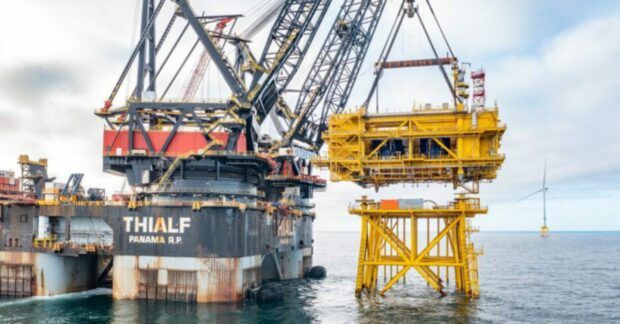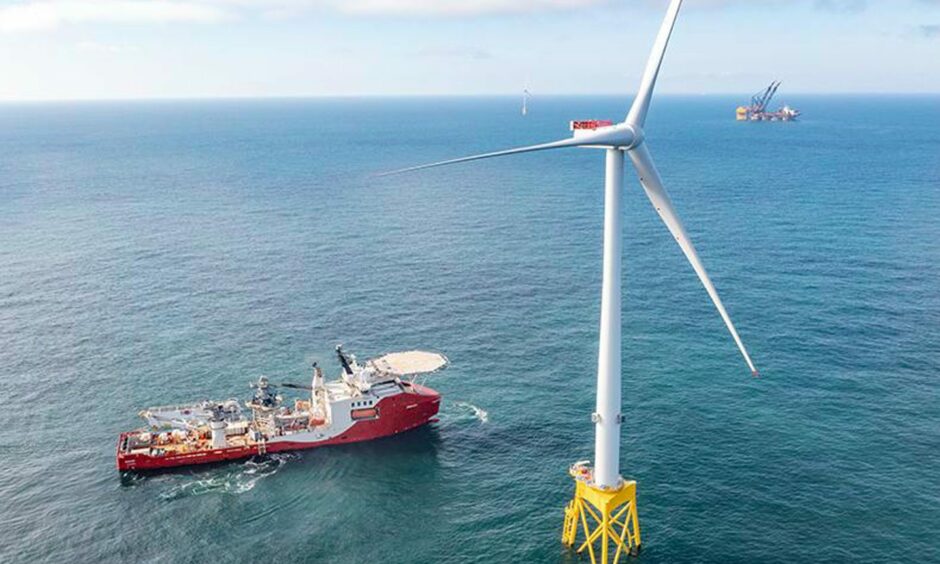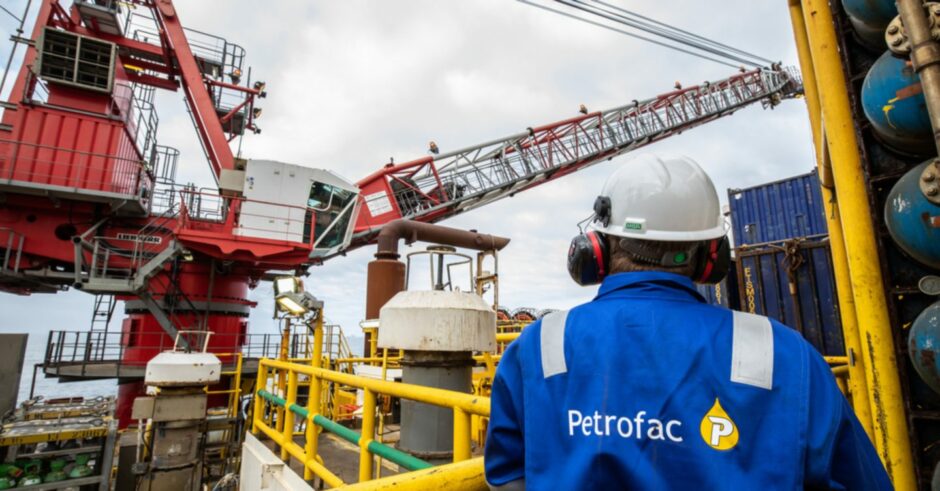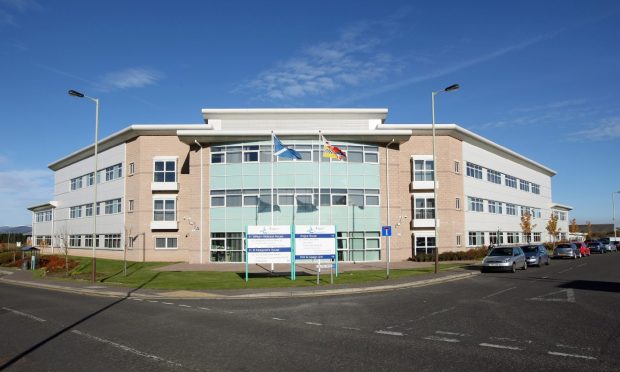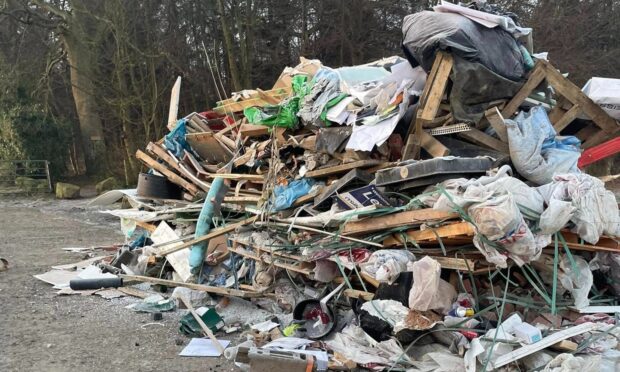Workers were forced to evacuate from a transformer platform in the giant £3 billion Seagreen wind farm 27 miles off the Angus coastline after an escape of the world’s “most potent greenhouse gas”.
The sulphur hexafluoride (SF6) escape – the most damaging to the world, according to the US Environmental Protection Agency – happened five months ago with industry workers blowing the whistle on the incident to North Sea trade unionist Jake Molloy of the RMT.
The 1 gigawatt (GW) wind farm is owned by SSE (49%) and TotalEnergies (51%) with the substation managed by works contractor Petrofac.
What is SF6?
SF6, a synthetic gas, is used as an electrical insulator in high-voltage equipment that transmits and distributes electricity.
Usually, equipment that contains the noxious gas is designed to avoid releasing it into the atmosphere.
However, leaks do happen particularly when the equipment is too old, or when it is being built, installed, maintained or decommissioned.
SF6 is almost 24,000 times more dangerous as a greenhouse gas than carbon dioxide, according to the UK’s Health and Safety Executive (HSE).
It is frighteningly persistent, with an atmospheric lifetime of 3,200 years.
In 2019, it was estimated that, across the entire UK network of power lines and substations, there were around one million kilograms of SF6 in use.
Although not deemed toxic to humans, the gas can cause respiratory issues in high concentrations and be harmful to skin and eyes on contact.
SF6 is banned in Europe except for power generation. SSE has been searching for a safer substitute since at least 2015 due to problems with SF6 use in power stations and substations in the south of England and Scotland, according to consultancy Oxifree UK.
Union blows the whistle to danger
Jake Molloy, the regional organiser for the RMT union, said he raised the incident with SSE and subsequently with the HSE and, angered by the lack of workforce engagement in the sector he brought the incident to public attention.
HSE told Energy Voice, the Press and Journal’s sister publication, the incident was raised at the time although it did not conduct an investigation.
A spokesperson added “the information has been used to inform future intervention activities”.
On June 13, during the commissioning of the massive transformers and switchgear aboard the platform known as Montrose, there was a serious gas release, in turn triggering an urgent evacuation of the platform.
All 84 workers were shifted from the Montrose substation platform to the Borr Ran bridge-linked support jack-up rig.
Although there were no casualties, EV has discovered SSE/Petrofac failed to report the evacuation to the Coastguard as a safety precaution, but it said HSE and Marine Scotland were notified.
Mr Molloy of RMT said: “The Seagreen incident is one event that did get reported to the trade unions by worried offshore workers.
“But how many go unreported, how is this policed and regulated, what are the reporting procedures? We need to know. It has to be properly managed.”
SF6 gas at Angus wind farm
Clearly aware of SF6’s destructiveness, on December 1 last year the HSE granted a “legal exemption that will enable the use of more environmentally friendly gases in the electricity distribution network”.
Standard systems were immediately activated”
Petrofac spokesperson
Petrofac insisted the emergency had been handled correctly and that just 11kg of the harmful greenhouse gas was lost to the atmosphere.
A Petrofac spokesperson said: “Standard systems and procedures were immediately activated and site access restricted as a precautionary measure.
“Although the volume of C02 equivalent did not meet the threshold for reporting, Petrofac documented and shared all lessons with relevant stakeholders including the HSE and Marine Scotland.”
A spokesman for SSE, which is in overarching control during the construction phase, told EV: “At the time of contract signing for the procurement of the transformer switchgear destined for the Seagreen project, which is currently under construction, there were no viable SF6-free alternatives available, capable of operating at all voltage levels needed, that could be considered for deployment to the project.”
‘Abandon Rig’
A report from workers to RMT, seen by Energy Voice, outlines how two people on board the platform shouted “gas leak” and “abandon rig”.
Energy Voice were advised two workers were checking equipment when suddenly there was a loud noise – as if an air hose had been disconnected. They turned to see what was happening.
Workers claimed a radio call was made, although there was no public address or alarms – that latter point was refuted by Petrofac which said alarms did sound via the PA system.
The contractor confirmed one affected area on board was shut for two days to ensure the removal of SF6, while access to all other areas was reinstated after 12 hours.
Workers claimed an argument broke out later that week over returning to work – with engineers saying they would not as there was no permit for it.
They said: “We asked various guys if there has ever been a leak of SF6 gas before anywhere (seeing as it’s the worst greenhouse gas on the planet!)
“Most said nah (no), but if there was a leak there would be hell on as it’s a major ****-up!
“So the attitude was, it’s never happened before so it won’t happen here, and when it did happen they clearly were not ready for it.”
However, Petrofac said: “As standard, we suspend and reissue permits following any incident in order to ensure the safety of our people and that all personnel at site are trained in emergency response procedures, this includes detailed briefings on SF6.”
The HSE has been contacted for comment.
How dangerous is Sulfur Hexafluoride (SF6)?
According to the New Jersey Department of Health:
- Sulfur Hexafluoride can affect you when breathed in
- Sulfur Hexafluoride can irritate the skin causing a rash or burning feeling on contact Direct skin contact can cause frostbite
- Sulfur Hexafluoride may cause severe eye burns leading to permanent damage
- Breathing Sulfur Hexafluoride can irritate the nose and throat
- Breathing Sulfur Hexafluoride may irritate the lungs causing coughing and/or shortness of breath
- Higher exposures can cause a build-up of fluid in the lungs (pulmonary edema), a medical emergency, with severe shortness of breath
- High exposure can cause headache, confusion, dizziness, suffocation, fainting, seizures and coma.
